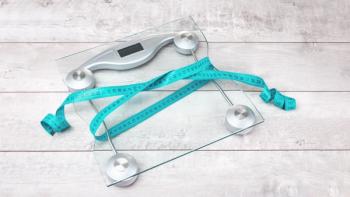
Ingredient Spotlight: 7-Keto-DHEA, Raspberry Ketones
It is extremely important to assess whether current research on these ingredients lives up to media hype.
Dietary ingredients targeting weight loss are commonly thrust into the media spotlight. This year, television personality Dr. Oz enthusiastically endorsed such ingredients as 7-keto-DHEA and raspberry ketones, evoking overnight popularity, sensational headlines, and skyrocketing sales.
Weight-loss products and claims rank notoriously high on the FDA and FTC radar. Thus, it is extremely important to assess whether current research on these ingredients lives up to media hype, and more importantly, if their safety has been properly assessed.
7-Keto-DHEA
The ingredient 7-keto-DHEA (7-keto-dehydroepiandrosterone or 7-oxo-dehydroepiandrosterone) is a metabolite of dehydroepiandrosterone (DHEA), an endogenous human hormone produced by the adrenal glands. DHEA is the most abundant adrenal steroid in young adults, peaking at ages 20 to 25 and markedly decreasing in middle age. Its overall decline is associated with many age-related conditions.(1-5)
Supplemental DHEA has been associated with prolonging life span; exhibiting food- and alcohol-restriction–like benefits; and beneficially altering body weight, composition, and dietary energy utilization in rodents.(6-8) (DHEA, however, is a precursor to other steroid hormones, such as testosterone and estrogen. Therefore, its widespread use has been somewhat limited due to the potential negative effects of enhanced steroidal hormone production.) It is now thought that DHEA may exert these antiaging effects by way of its biologically active metabolites, 7-keto-DHEA, 7-a-OH-DHEA and 7-b-OH-DHEA, sparking interest into these compounds.(8)
Thermogenic and anti-adipogenic effects of 7-keto-DHEA and its metabolites have been identified, although are not fully understood. These compounds are thought to stimulate thermogenesis by enhancing mitochondrial function, similarly to thyroid hormone.(9,10) Likewise, 7-keto-DHEA has demonstrated the ability to enhance the production of thermogenic enzymes within liver cells, including G-3-P dehydrogenase and malic enzyme. Fatty acid oxidation may also be enhanced by 7-keto-DHEA, as suggested by an increase in fatty acyl-CoA oxidase activities in animals after ingesting 7-keto-DHEA.(3,9,10)
Human Intervention Trials
The acetylated version of 7-keto-DHEA, designated as 3-acetyl-7-oxo-dehydroepiandrosterone, or the branded ingredient 7-Keto (licensed by Humanetics Corp.), has been the subject of multiple human randomized, placebo-controlled, double-blind studies. The acetylated compound is less susceptible to oxidation during the manufacturing process relative to 7-keto-DHEA and is rapidly converted to 7-keto-DHEA upon ingestion.(12) Humanetics Corp. holds the patent for the use of 7-Keto for promoting weight maintenance or weight loss by modulating the basal metabolic rate, among other uses. Humanetics Corp., or companies who have established licensing rights with Humanetics Corp., have sponsored most of the published human clinical trials on the ingredient.
In 2000, Kalman et al. studied the effects of 7-Keto in healthy overweight adults. Thirty subjects received either 100 mg twice daily (200 mg daily) 7-Keto or placebo for eight weeks along with exercise training, restricted diet (approx. 1800 kcal/day), and nutritional counseling. Subjects in the 7-Keto group lost a significant amount of weight and body fat compared to placebo. In fact, weight loss in the 7-Keto group was almost three times the weight loss in the placebo group.(11) Subjects in the 7-Keto group also experienced a statistically significant increase in triiodothyroinine (T3) thyroid hormone compared to placebo, although levels were still considered within normal range. While these effects are appealing, this study did not appear to adjust caloric intake to body weight, possibly leaving confounding variables that may impact the significance of these results.
In 2007, Zenk et al. studied 7-Keto alone (50 mg), in a combination product HUM5007 (containing 50 mg 7-Keto), or placebo twice daily for effects on resting metabolic rate (RMR) in overweight adults.(13) All subjects (n=45) were given restricted-calorie diets based on their baseline RMR. The two treatment groups, HUM5007 and 7-Keto, experienced statistically significant increases in RMR during treatment compared to placebo (+59 kcal/day and +21 kcal/day, respectively). Body weight, body fat, and BMI did not statistically differ from placebo.
In another study evaluating RMR, a combination treatment including 7-Keto was studied.(14) Forty-seven overweight adults were given three capsules twice daily of a combination product (each capsule containing 17 mg 7-Keto, equating to a total of 102 mg of 7-Keto per day) for eight weeks along with a calorie-restricted diet. RMR as well as hip circumference in the combination product group was statistically different from placebo. While it is difficult to attribute the effects of combination product studies to 7-Keto alone, these results support the previous study, indicating a possible effect of 7-Keto on RMR.
Another combination product including 7-Keto and seven other ingredients was investigated for its effects on weight loss.(15) Thirty-five overweight adults received either the combination product containing 100 mg 7-Keto, or placebo, twice daily for eight weeks along with a reduced-calorie diet and exercise program. The group taking the combination product lost significantly more weight after eight weeks than the placebo group (2.15 ± 2.12 kg versus 0.72 ± 2.12 kg). However, no changes were found in body fat or basal metabolic rate.
Regulatory Status and Safety
As an endogenous “metabolite,” 7-keto-DHEA meets the U.S. regulatory definition of a dietary ingredient as defined by DSHEA. In 1997, General Nutrition Corp. (GNC) filed a new dietary ingredient (NDI) notification, on behalf of GNC as well as Humanetics Corp., for the use of 7-Keto. The FDA filed this notification without comment. The intended dose in this notification was 25 mg up to two times per day. In 2002, Perrigo Co. filed another NDI notification for 7-Keto, with a suggested dose of 100 mg up to two times daily. FDA also filed this notification without comment.
The safety of DHEA and its metabolites has been studied extensively. A summary of toxicology data performed on 7-Keto was included in the 1997 NDI notification. This included a negative mutagenicity (AMES) study and an acute oral gavage study in rats indicating a no-adverse-effect level of 2000 mg/kg. Oral doses of 140 mg/kg for 28 days and 500 mg/kg for 7 days were also found to be nontoxic in Rhesus monkeys.(16) Lastly, in a human escalating-dose study, no adverse treatment-related effects were seen in adult men given 200 mg/day (100 mg twice daily) of 7-Keto for 28 days.(17) No serious adverse events have been reported in any of the human clinical trials on 7-Keto.
Humanetics Corp., which supplies 7-Keto to approximately 400 companies, has sold over one billion capsules since 1998, without serious adverse event reports-quite impressive data adding to the safety profile of 7-keto-DHEA.
Raspberry Ketone
Raspberry ketone, or 4-(4-hydroxyphenyl) butan-2-one or 4-phenyl-2-butanol, is an aromatic compound found in raspberries (Rubus idaeus) as well as other fruits and the barks of some trees.(18) Raspberry ketone has been used as a flavoring molecule in the food industry for quite some time, primarily in confections, dairy products, and non-alcoholic beverages. Most of the flavoring provided by raspberry ketones is of a synthetic nature due to limited sourcing of natural forms (yields are typically 1 to 4 mg/kg raspberries).(18)
A large interest in this ingredient for weight maintenance is partly due to its structural similarity to compounds such as capsaicin and synephrine. This fact has also caused some to question the safety of raspberry ketone. The mechanism of raspberry ketone within the body still needs to be fully understood; however, it is known that after ingestion, 4-phenyl-2-butanol is rapidly absorbed, conjugated with glucuronic acid, and excreted.(19) It’s been reported that 90% of an oral dose is excreted within 24 hours in animals.(20)
In vitro and Animal Trials
In 2005, an intriguing in vitro trial indicated that raspberry ketone could enhance lipolysis in adipocytes.(20) Another in vitro trial, conducted by a researcher of the Korean Food and Drug Administration, confirmed these results and found that adipocyte lipolysis was enhanced threefold by raspberry ketone. Furthermore, after the cells had been bathed in raspberry ketone for four days, increased adiponectin (a hormone involved in energy homeostasis) and fatty acid oxidation were observed. Lastly, lipid accumulation within the adipocytes was markedly suppressed by raspberry ketones.(21)
A subsequent animal trial investigated raspberry ketone’s effects on obesity and lipid metabolism. Male mice were given a high-fat diet, or a high-fat diet in conjunction with 0.5%, 1%, or 2% raspberry ketones, for 10 weeks.(20) As expected, the mice on the high-fat diet significantly gained weight and had increases in fat storage, liver triglyceride levels, and fatty liver. Raspberry ketone (at 1% and 2% of diet) suppressed these effects. It is thought that raspberry ketone exerts its lipid alterations through norepinephrine-induced lipolysis.
Unfortunately, there are as of yet no published human trials on raspberry ketones.
Regulatory Status and Safety
In 1965, the self-affirmed GRAS status of raspberry ketone was granted by FEMA (Flavor and Extract Manufacturers Association). While FDA recognizes the self-affirmed GRAS status of ingredients (and has not challenged any of FEMA’s GRAS opinions to date), it is important to note that the FDA itself has not designated raspberry ketone as a GRAS compound. FDA permits 4-(4-hydroxyphenyl) butan-2-one’s use as a food additive per 21 CFR 172.515, as long as it is “used in the minimum quantity required to produce their intended effects.”
Raspberry ketones are part of a group of compounds classified by the Joint FAO-WHO Expert Committee on Food Additives (JECFA) as “aromatic substituted secondary alcohols, ketone, and related esters.” In a safety evaluation in 2001, JECFA found “no safety concern at current levels of intake when used as a flavoring agent” for raspberry ketones and assigned these compounds to a Structural Class I, suggesting the lowest of three classes of toxicity of flavorings.(19) Raspberry ketones, however, were not rated with regard to levels over 1.5 µg/day. The average intake in the United States through diet is 0.03 µg/day. JECFA identifies a “threshold of concern” of 1800 µg/kg/day for human intake of flavoring agents in the Structural Class I. Therefore, based on this information, a safety limit for raspberry ketones can be assumed, for a 70 kg adult, to be 126 mg/day. Although small levels of raspberry ketones have been ingested throughout history with no safety concerns, additional safety studies may be needed for dosages indicated for weight loss, often suggested at up to 200 mg daily.
Conclusion
The science, safety profile, and regulatory status of 7-keto-DHEA, particularly the acetylated form, 7-Keto, have brought this ingredient a much-desired credible stance in the world of weight-loss ingredients. Additional human intervention trials involving 7-keto-DHEA (particularly as a monotherapy) are warranted to substantiate the efficacy of this ingredient for weight management in humans, as well as provide larger understanding of its vast effects in the body. The current research, however, does support a thermogenic effect of 7-keto-DHEA.
The research on raspberry ketone is also quite intriguing with regard to weight maintenance. While it still needs the support of human clinical trials and possibly additional safety data to support its use at higher doses, the available in vitro and animal evidence looks promising.
References
1. Hampl R, Hill M, et al. Relationship of dehydroepiandrosterone and its 7-hydroxylated metabolites to thyroid parameters and sex hormone-binding globulin (SHBG) in healthy subjects. Clin Chem Lab Med. 2003; 41: 1081-6.
2. Hennebert O, Chalbot S, et al. Dehydroepiandrosterone 7alpha-hydroxylation in human tissues: possible interference with type 1 11beta-hydroxysteroid dehydrogenase-mediated processes. J Steroid Biochem Mol Biol. 2007; 104: 326-33.
3. Lardy H, Marwah A, et al. C(19)-5-ene steroids in nature. Vitam Horm. 2005; 71: 263-99.
4. Robinzon B, Michael KK, et al. Glucocorticoids inhibit interconversion of 7-hydroxy and 7-oxo metabolites of dehydroepiandrosterone: a role for 11beta-hydroxysteroid dehydrogenases? Arch Biochem Biophys. 2003; 412: 251-8.
5. Spencer NFL, Poynter ME, et al. Does DHEAS restore immune competence in aged animals through its capacity to function as a natural modulator of peroxisome activities? Annals New York Academy of Sciences. 1995; 774: 200-216.
6. Catalina F, Speciale SG, et al. Food restriction-like effects of dietary dehydroepiandrosterone. Hypothalamic neurotransmitters and metabolites in male C57BL/6 and (C57BL/6 x DBA/2)F1 mice. Exp Biol Med (Maywood). 2001; 226: 208-15.
7. Tagliaferro AR, Davis JR, et al. Effects of dehydroepiandrosterone acetate on metabolism, body weight and composition of male and female rats. J Nutr. 1986; 116: 1977-83.
8. Webb SJ, Geoghegan TE, et al. The biological actions of dehydroepiandrosterone involves multiple receptors. Drug Metab Rev. 2006; 38: 89-116.
9. Bobyleva V, Bellei M, et al. The effects of the ergosteroid 7-oxo-dehydroepiandrosterone on mitochondrial membrane potential: possible relationship to thermogenesis. Arch Biochem Biophys. 1997; 341: 122-8.
10. El Kihel L. Oxidative metabolism of dehydroepiandrosterone (DHEA) and biologically active oxygenated metabolites of DHEA and epiandrosterone (EpiA)--recent reports. Steroids. 2012; 77: 10-26.
11. Kalman DS, Colker CM, et al. Effects of a weight-loss aid in healthy overweight adults: double-blind, placebo-controlled clinical trial. Current Therapeutic Research. 2000; 61: 199-205.
12. Marwah A, Marwah P, et al. Development and validation of a high-performance liquid chromatography assay for the quantitative determination of 7-oxo-dehydroepiandrosterone-3beta-sulfate in human plasma. J Chromatogr B Biomed Sci Appl. 1999; 721: 197-205.
13. Zenk JL, Frestedt JL, et al. HUM5007, a novel combination of thermogenic compounds, and 3-acetyl-7-oxo-dehydroepiandrosterone: each increases the resting metabolic rate of overweight adults.J Nutr Biochem. 2007; 18: 629-34.
14. Zenk JL, Leikam SA, et al. Effect of lean system 7 on metabolic rate and body composition. Nutrition. 2005; 21: 179-85.
15. Zenk J, Helmer T, et al. The effect of 7-Keto Naturalean™ on weight loss: a randomized, double-blind, placebo-controlled trial. Curr Ther Res. 2002; 63: 263-272.
16. Henwood SM, Weeks CE, et al. An escalating dose oral gavage study of 3beta-acetoxyandrost-5-ene-7, 17-dione (7-oxo-DHEA-acetate) in rhesus monkeys. Biochem Biophys Res Commun. 1999; 254: 124-6.
17. Davidson M, Marwah A, et al. Safety and pharmacokinetic study with escalating doses of 3-acetyl-7-oxo-dehydroepiandrosterone in healthy male volunteers. Clin Invest Med. 2000; 23: 300-10.
18. Beekwilder J, van der Meer IM, et al. Microbial production of natural raspberry ketone. Biotechnol J. 2007; 2: 1270-9.
19. WHO. WHO Technical Report Series 909. Evaluation of certain food additives and contaminants. Fifty-seventh report of the Joint FAO/WHO Expert Committee on Food Additives. World Health Organization (WHO). 2002. 1-186.
20. Morimoto C, Satoh Y, et al. Anti-obese action of raspberry ketone. Life Sci. 2005; 77: 194-204.
21. Park KS. Raspberry ketone increases both lipolysis and fatty acid oxidation in 3T3-L1 adipocytes. Planta Med. 2010; 76: 1654-8.
Newsletter
From ingredient science to consumer trends, get the intel you need to stay competitive in the nutrition space—subscribe now to Nutritional Outlook.





